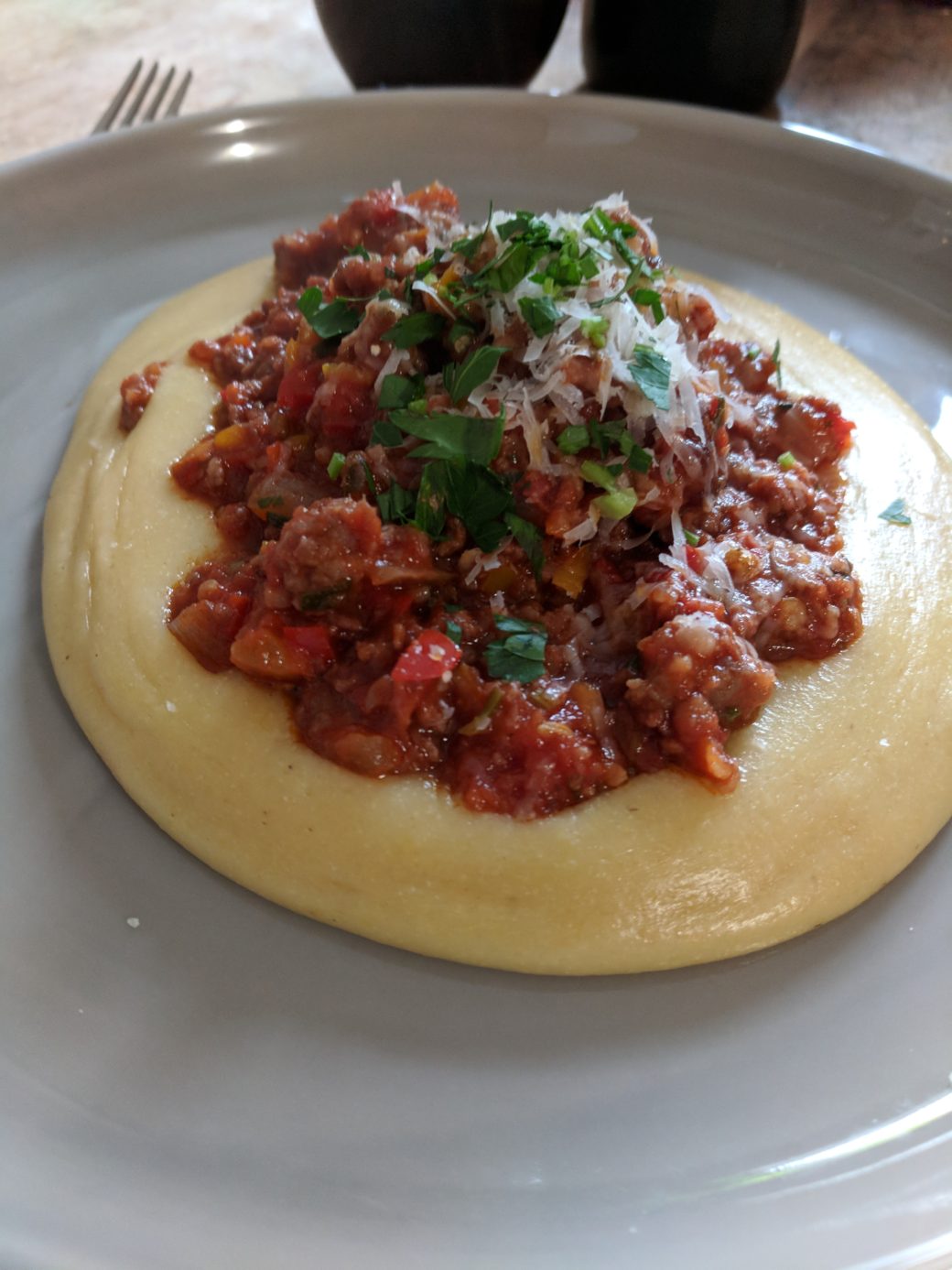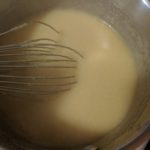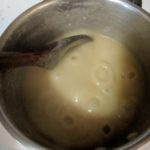Polenta is a dish made of ground corn cooked in water, milk or stock. It can be served either firm or creamy. And for either breakfast, lunch or dinner. It is a filling, and delicious alternative to pasta, rice, or potatoes. It is often served with braised meats, tomato sauces, seafood and pretty much anything else you can imagine.
Polenta History
When we think of polenta we automatically think of it being made of corn. In reality, however, polenta existed in Italy long before corn was brought back from the new world in the 16th century. Prior to this polenta was made with pretty much any grain the Italians could get their hands on. Grains like barley, wheat, farrow, and even legumes like chickpeas. By the time corn was introduced the Italians had been eating polenta in one form or another for thousands of years. And so using corn once it was introduced, to make polenta would have been a no-brainer.
Despite the fact that we think of polenta as an Italian dish, corn polenta we being eaten by the Aztecs and Mayans for a very long time before corn was ever introduced to Italy. So, shout out to the Aztecs and the Mayans.
Polenta is essentially just a gruel made of boiled grains. This is peasant food if there has ever been one. Despite the fact that we now see polenta on the menus at very high-end restaurants, it’s humble origins are still evident.
As part of their rations, Roman soldiers were given grains like barley, millet, and farrow. They would toast these, grind them, and make polenta, or porridge (which are pretty much the same thing). They would either eat it fresh and creamy or let it cool and eat it as a cake. Not only was this a big part of a soldiers diet, it was a big part of most peoples diets.
So really, polenta is likely one of the oldest forms of food from our agrarian ancestors. As soon as they stopped wondering and started cultivating they would have made what they were growing into gruel, porridge, or polenta. As new grains were introduced they were prepared in the same simple way.
Now that we know a bit about the back story of polenta, let’s look at how to make it and how to get the most out of it.
Liquid to Cornmeal Ratio
Generally, when making polenta, either soft or firm, you start with a ratio of four parts liquid to one part cornmeal. There are people out there that suggest a ratio of five parts liquid to one part cornmeal as this may better hydrate the corn. I have tried both ways and find that the hydration depends more on the corn and the temperature at which you cook it. You can use any kind of cornmeal but generally, a coarser grind is recommended as this will give the polenta the most corn flavour.
Hot or Cold?
There are many different views about at what point the cornmeal should be added to the liquid. Some say the liquid should be boiling when the cornmeal is added. Some say bring the liquid to a boil with the cornmeal. I prefer to boil the liquid first. I just find it easier to manage. The important part is to make sure you are whisking while adding the cornmeal so it doesn’t clump.
Water, Stock, or Milk?
When making something like polenta, part of the process is trying to subtly add as much flavour as you can. Otherwise, it just tastes mildly of corn. To that end, I prefer stock or milk over just plain water. Match the stock to what the polenta will be paired with. A seafood dish, fish stock. For a chicken dish, chicken stock. You get it.
Milk is good when you want a little extra richness and creaminess. But make sure to use a full-fat milk like homogenized milk as the heat will slipt 2% or skim.
Also, adding flavour to the milk or stock with flavourings like bay leaves, and herbs is always a good idea.
Other Ingredients
Generally, polenta is made of four ingredients, salt and pepper not included. We already know about the cornmeal, and stock or milk. What are the other two? Parmesan cheese and butter usually finish off a batch of polenta beautifully. The butter adds a subtle richness and parmesan cheese makes everything better.
How To Make Polenta
The process of making polenta is not a complicated one but it is a time consuming one and you will be exerting some energy. The thing about polenta is that you pretty much have to be stirring it constantly for about 20 – 30 minutes. It’s hot, it’s thick, and it takes a while. But, it is completely worth it, especially if you only make it once in a while.
To start, bring four cups of liquid, milk or stock, to a boil. Now whisk in one cup of cornmeal. Bring back to a boil, reduce the heat to low and strap in because you are going to be stirring for a while. For the next 20 or so minutes pretty much just stand there and stir. Eventually, you will have to switch out the whisk for a wooden spoon because the mixture will get too thick. Once the polenta is the desired consistency (about the same as scrambled eggs), add 1-2 tbsp of butter, a big handful of parmesan cheese, and season with salt and pepper. At this point, you can serve it as a creamy polenta, or cook it down a bit more and then pour it into a dish and cool it.
When it comes to creamy polenta, you really just want to make sure that the cornmeal is all hydrated and cooked. That’s all. For firm polenta, you want to make sure it’s nice and thick before putting it in a dish and cooling it. The idea with the firm polenta is that you cool it, slice it, and then you can sear it or bake it and it will hold it’s shaped. So, you want it to be really firm when your cooking it, this way it will be really firm when it is reheated. But don’t worry about getting the exact consistency you want. As the polenta cools about 10% more liquid will evaporate off. This means that your cooled and reheated polenta will be about 10% more firm than it is when you are making it. I hope that makes sense.
If you have never made polenta, or even had it, give it a shot. It’s a really cool and delicious alternative to mashed potatoes or pasta.




0 Comments